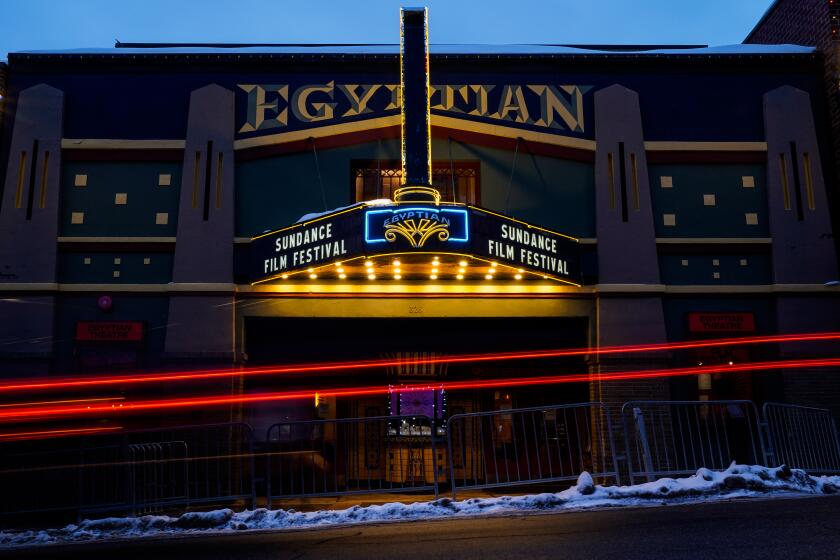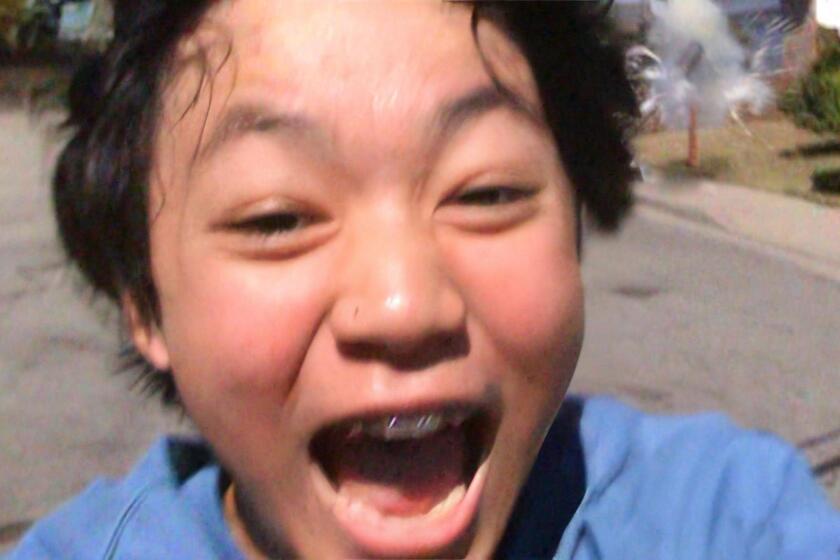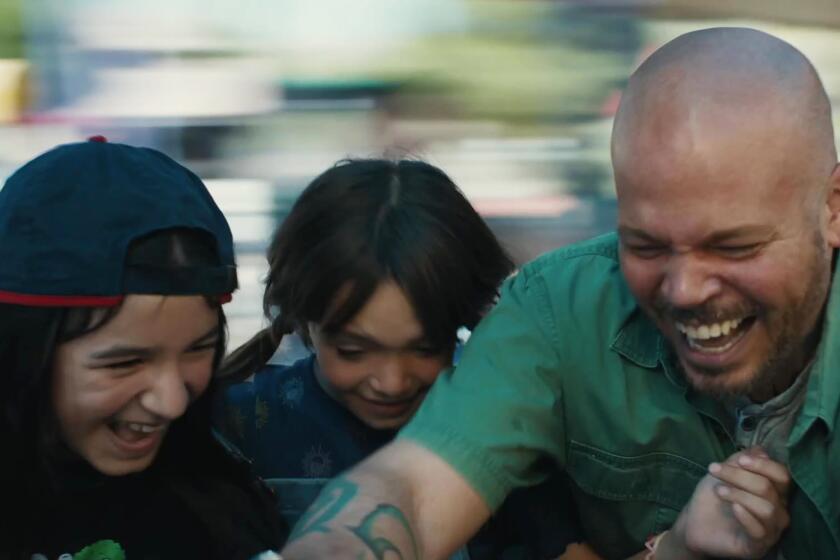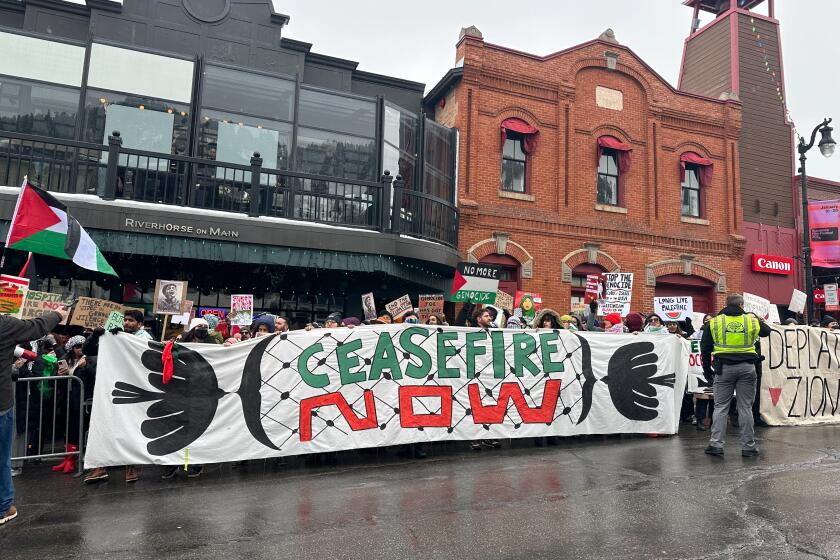Dee Rees on her Sundance return, adapting Joan Didion’s ‘The Last Thing He Wanted’
PARK CITY, Utah — Dee Rees is easily one of the most exciting and noteworthy filmmakers to emerge from the Sundance Film Festival in the last decade. Her latest film, “The Last Thing He Wanted,” an adaptation of the 1996 novel by Joan Didion and starring Anne Hathaway, premieres Monday night.
Rees’ debut feature “Pariah” premiered at Sundance in 2011, going on to be bought by Focus Features and winning both Gotham and Spirit awards. After making “Bessie” for HBO, her next film, “Mudbound,” brought her back to Sundance in 2017. That film would be bought by Netflix and go on to receive four Academy Award nominations, making Rees the first African American woman nominated for adapted screenplay.
“The Last Thing He Wanted” is a paranoid thriller in which a woman who is used to being certain of herself finds her world turned upside down. Hathaway plays Elena McMahon, a Washington, D.C. journalist passionately pursuing stories in Central America. She is reassigned to cover the 1984 presidential campaign but soon finds herself drawn into a gun-running scheme by her father, played by Willem Dafoe. Adrift and in over her head, she is unsure of who to trust between an American government official (Ben Affleck) and an enigmatic figure of uncertain loyalties named Jones (Edi Gathegi). Rosie Perez plays Alma, a colleague of Elena’s trying to help her get safely back home.
The movie will be released by Netflix and will receive a limited theatrical opening on Feb. 14 before going on the site on Feb. 21. Rees recently called to talk about the film ahead of its Sundance premiere.

There’s something really exciting about seeing you grapple with genre mechanics and making this movie as a thriller that also feels very emotional and political.
Rees: Thanks. It’s just a hard book to adapt, but it’s a book that I love. The thing about the book, it’s so internal, like Elena’s struggle is so within herself and there is no why. And so it was kind of fun to tell a story where the protagonist sometimes acts against herself or thinks she knows something but doesn’t. It’s just a fun kind of spiral to go on.
Did you actually meet Joan Didion or communicate with her at all?
No, just through her team. She’s seen the film and likes it, but I haven’t gotten to talk to her directly.
Now that she’s so popular for her essays, the other side of her work often gets overlooked, so the idea of adapting one of her novels right now —
Her fiction work. Yeah, I know, it’s funny. People act like her fiction is less than. I mean, “Play It as It Lays” was done [as a movie] and that’s the other book that I love, but I really wanted to do her fiction just because I think there’s so much there. Even her fiction feels like it’s loosely based on actual happenings. So it’s just such an internal, kind of weirdly objective third person. And the whole book is actually told by this unknown narrator who we never even know the position or the vantage from which they’re speaking. So it’s just an interesting narrative approach.
How did you find the adaptation process — dealing with the narrator and the thriller mechanics — what was the process of just breaking the book?
I wanted Marco [Villalobos] to take the first shot. I really wanted to embrace Didion’s prose. Just in terms of my work, the directing of it, I wanted the camera to move with the speed of her prose, this kind of stream of consciousness. That’s why the opening was so important. That’s the opening passage of the book, and to have that kind of momentum with the camera language, with the blocking, was a fun challenge and was something that I wanted to bring up. And then I did a second pass. And what I was trying to do is give a little more connectivity, because in the book there’s no reason why Elena goes or why she stays.
Does the film feel like a departure to you?
I always say I like characters. Like you could say “Bessie” was a departure from “Pariah,” and “Mudbound” was a departure from “Bessie.” But to me it’s all aligned because I’m interested in conflicted characters. I’m interested in characters whose biggest struggle is within themselves, so they don’t know why they’re doing something. So I would say it’s the same in that regard. It’s just only different in terms of setting and context.
Were there any films in particular that you were thinking about or referring to in making “The Last Thing He Wanted”?
I thought about “The Parallax View.” I thought about “Salvador.” Or even “Network,” even though it’s like not directly applicable. I thought about films that had this kind of momentum, that had this kind of realistic feel, that felt chaotic and gritty and nonstop.
Those 1970s paranoid thrillers that people talk about all the time, with the exception of “Klute,” I can’t think of any that focus on a female lead character. So to have all this political intrigue going on and then the character has to stop to check in with her daughter or worry about childcare, I don’t think I’ve ever seen that in one of these paranoia thrillers before.
And that’s really in Didion’s work, honestly. It’s part of what Elena’s wrestling with, this ambivalence, frankly, that she feels about her daughter. She says in the end, I walk away from this like I walk away from everything. So I think it’s this kind of taboo, you know, that isn’t really allowed to be expressed. One of the things that I liked about it is that father-daughter love story at the center of it. You know, here’s a father and a daughter who have this kind of dysfunction, there’s been this kind of abandonment and Elena resents her father and loves her father and is determined not to repeat it, but is exactly repeating the same cycles of abandonment and neglect with her daughter. She can’t admit to herself there’s a part of her that doesn’t quite care. So it’s like that kind of tug, the thing that she won’t say out loud. That is the why.
More to Read
Only good movies
Get the Indie Focus newsletter, Mark Olsen's weekly guide to the world of cinema.
You may occasionally receive promotional content from the Los Angeles Times.












